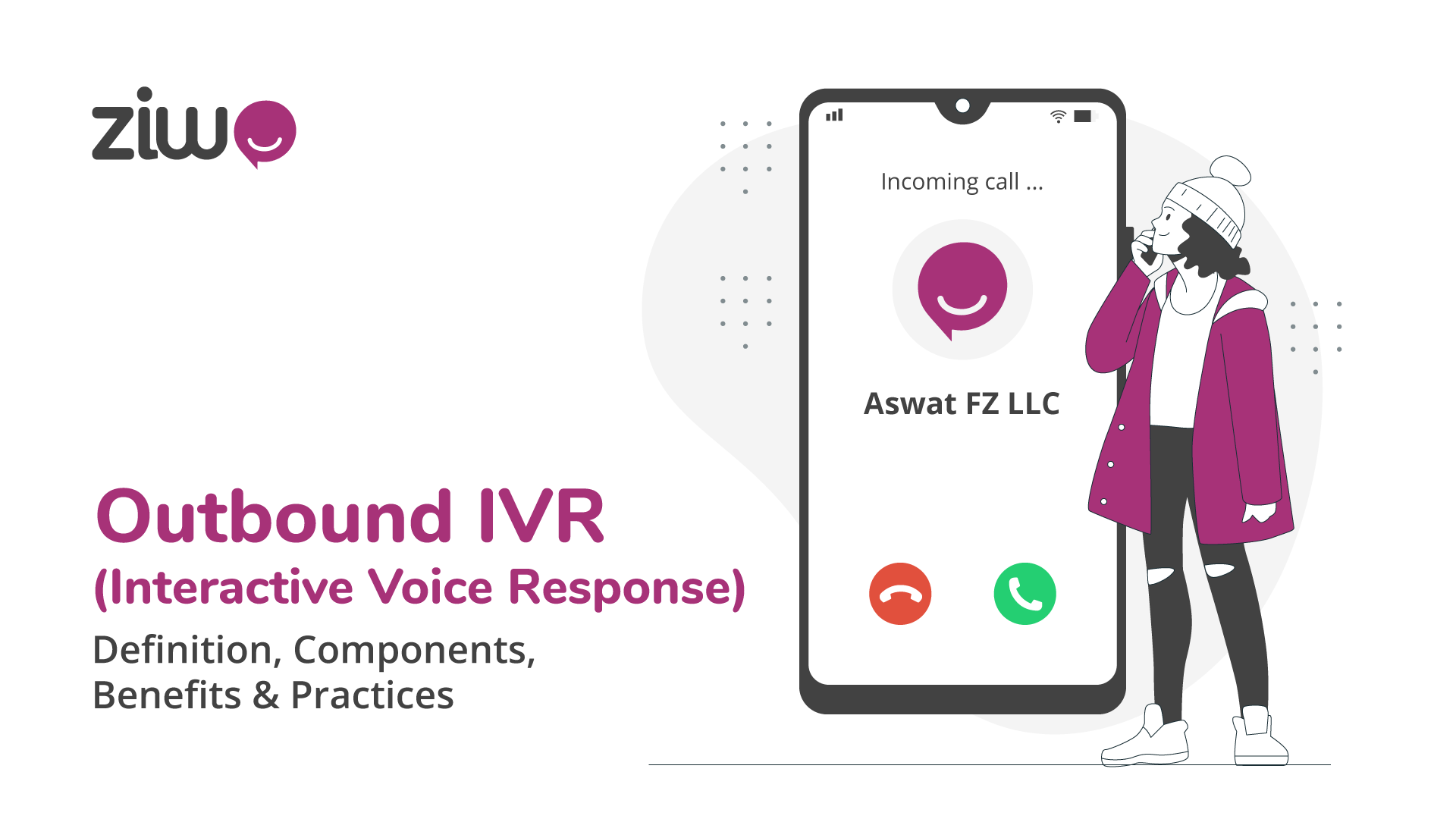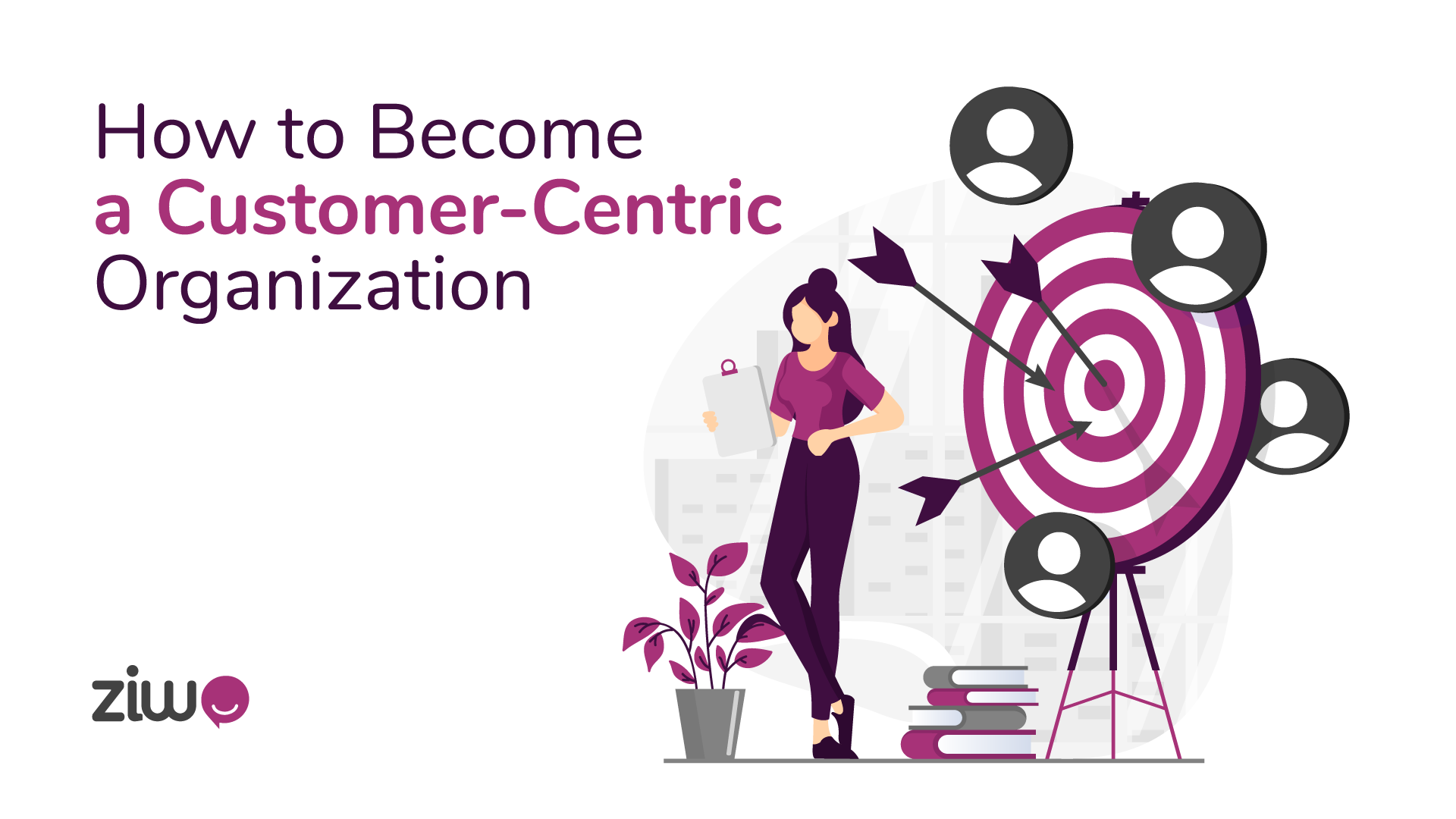
Quels sont les défis posés par la mise en œuvre de la VoIP dans les centres d'appel et comment les résoudre ?
Parmi les difficultés liées au passage des centres d'appel à l'hébergement VoIP figurent les problèmes de qualité des appels, les menaces pour la sécurité, la fiabilité, la compatibilité des appareils et la formation du personnel. Le problème peut être résolu grâce à l'approche adoptée par les organisations.
Elles ont besoin d'une optimisation du réseau, de mesures de sécurité robustes, d'une défaillance en cas d'interruption de service et de solutions de protocole de voix sur internet avec de fortes capacités d'intégration (VoIP). Elles doivent également mettre en place des programmes complets de formation à l'adoption par le personnel.
Introduction aux défis de la mise en œuvre de la VoIP
Il est plus qu'évident que l'adoption de la technologie VoIP dans les centres d'appel apporte une pléthore d'avantages, notamment en termes de rentabilité, comme indiqué en détail dans la section Pourquoi la VoIP est une solution de communication rentable pour les centres d'appel, mais elle s'accompagne également de certains défis que les organisations doivent relever.
D'autre part, un déploiement réussi de la VoIP couvre le domaine des appels de qualité et de la continuité efficace du réseau, de la gestion des risques et de l'intégration avec l'infrastructure existante, et tout cela peut être réalisé grâce à une planification minutieuse et à la proactivité.
Dans cette introduction, nous allons passer en revue les principaux problèmes qui peuvent survenir lors de la mise en œuvre de la VoIP dans les centres d'appels et discuter des techniques pour se débarrasser de ces problèmes, c'est pourquoi les organisations devraient utiliser la technologie VoIP non seulement pour la communication, mais aussi pour la prestation de services à la clientèle.
Identifier les défis courants de la mise en œuvre de la VoIP
Parmi les principaux problèmes liés à la mise en œuvre de la VoIP figurent les problèmes de qualité des appels, les problèmes de sécurité, les complications liées à la fiabilité et au temps de fonctionnement, les défis liés à la compatibilité et à l'intégration, ainsi que la réticence du personnel à utiliser le nouveau système, principalement en raison du manque de formation et des obstacles à l'adoption.
Ces problèmes peuvent nuire à l'efficacité de l'incorporation de la VoIP dans les centres d'appel et nécessitent donc des mesures préventives pour les compenser et les résoudre1.
Stabilité du réseau et limitations de la bande passante
Les contraintes de l'interface réseau et les limitations de la bande passante dans l'adoption de la VoIP pour les centres d'appel constituent des problèmes majeurs. Si cette instabilité se traduit par des appels perdus, une qualité d'appel médiocre et des coupures intermittentes de la communication, les fournisseurs de services seront confrontés à l'insatisfaction et à la perte de clients.
Ces déficiences peuvent entraîner la perte de paquets, des retards et de la colère pendant les poignées de main. Les limitations de la bande passante peuvent être à l'origine de ces problèmes.
L'une des approches que les centres d'appel peuvent adopter pour surmonter ces difficultés est l'acquisition d'une connexion internet fiable et d'une bande passante adéquate.
La qualité de service (QoS) est une autre mesure qui dépasse ses limites. Les données sont triées en utilisant la QoS et la VoIP de manière répétée, ce qui permet d'améliorer la qualité de chaque transmission.
La surveillance en temps réel, qui permet également d'optimiser le réseau de temps à autre, peut contribuer à améliorer la stabilité ainsi que la qualité des services et conduire à une expérience de VoIP sans heurts3.
Sécurité et protection de la vie privée
Les questions de sécurité et de confidentialité constituent de vastes obstacles à la mise en œuvre de la VoIP qui sont définitifs pour les centres d'appel. L'un d'entre eux comprend des mérites tels que l'écoute, le piratage et l'usurpation d'identité qui peuvent entraîner la divulgation des données des clients, ce qui fait perdre aux centres d'appels leur avantage concurrentiel et leur conformité à la réglementation.
Pour résoudre ces difficultés, les centres d'appel doivent mettre en œuvre des mesures de sécurité strictes telles que le cryptage, les pare-feu, la détection des intrusions, etc.
Des audits réguliers de la sécurité de l'information et la formation du personnel à la haute sécurité de l'information sont parmi les principaux moyens d'atténuer les risques et de maintenir la confiance des clients4.
Intégration dans l'infrastructure existante
L'intégration dans l'infrastructure existante pourrait être un compromis pour l'adaptation de la VoIP dans les centres d'appel. Nous devons parvenir à une compatibilité totale et à une combinaison harmonieuse entre les systèmes VoIP et les plates-formes CRM, les systèmes IVR, le matériel de téléphonie et d'autres technologies déjà en place.
Pour surmonter ce goulet d'étranglement, il faut se préparer correctement, tester le processus et, dans certains cas, acquérir des solutions intermédiaires telles que des intergiciels ou des outils d'intégration APIs2. Il convient également de prévoir des fonctionnalités de formation à la nouvelle configuration intégrée afin d'assurer une transition en douceur et d'éviter toute interruption des opérations.
Les problèmes d'intégration sont ici mis en évidence par les centres d'appels pour l'utilisation de l'infrastructure VoIP, ce qui permettra d'optimiser le système VoIP et d'éviter les coûts liés aux nouvelles technologies d'infrastructure.
Solutions pour surmonter les défis de la mise en œuvre de la VoIP
Pour relever les défis de la VoIP pour les centres d'appels, il est nécessaire d'appliquer des solutions telles que l'optimisation du réseau, une sécurité solide, un plan de sauvegarde, des tests de conformité complets, la formation du personnel, la qualité de service, ainsi qu'un contrôle et un ajustement réguliers.
Ces stratégies facilitent la reconnaissance des obstacles fréquents et l'établissement d'une pratique transparente de la VoIP.
Amélioration de l'infrastructure du réseau
L'amélioration de l'infrastructure du réseau comprend l'achat d'itinéraires internet de qualité supérieure, la priorité donnée au trafic VoIP grâce à des méthodes de qualité de service, la création d'une fiabilité grâce à des options de redondance, et l'examen et l'amélioration réguliers des paramètres du réseau.
Ces mesures créent un environnement qui sécurise et optimise les réseaux VoIP pour leur utilisation dans les centres d'appel.
Mise en œuvre de mesures de sécurité robustes
Un système de sécurité efficace nécessite un cryptage, un pare-feu, des outils de détection des intrusions, des contrôles d'accès, des audits réguliers de la sécurité et une formation du personnel. La mise en place de ces mesures de sécurité permet de protéger les communications VoIP et même les données les plus secrètes.
Stratégies d'intégration transparente
Les transitions de déploiement en douceur pour la VoIP dans les centres d'appels comprennent l'évaluation de la compatibilité, l'exploitation des API, la mise en œuvre d'intergiciels, les progrès de la technologie d'augmentation, des tests approfondis et l'offre de formation et d'assistance.
Cela est possible grâce à une conception qui garantit une interaction harmonieuse des systèmes VoIP avec l'infrastructure existante, ce qui permet d'augmenter les performances globales de la communication et, en fin de compte, d'améliorer la productivité des centres d'appels.
Meilleures pratiques pour une mise en œuvre sans faille de la VoIP
Les bonnes pratiques pour une mise en œuvre sans faille de la VoIP dans les centres d'appel englobent les points suivants : évaluation de l'état de préparation de l'infrastructure, définition d'objectifs clairs, réalisation de tests rigoureux et formation en cours d'emploi, mise en place de mesures de sécurité solides, partenariat avec les fournisseurs et suivi de la qualité, et préparation d'appels périodiques avec les utilisateurs du centre d'appel.
Ces processus permettent au système VoIP de s'adapter à chaque organisation et d'utiliser tout son potentiel pour améliorer l'efficacité de la communication.
Surveillance et assistance permanentes
Les dispositions en matière de supervision et d'assistance permanentes impliquent généralement une surveillance fréquente et régulière des systèmes VoIP afin de s'assurer que les performances sont optimales, de traiter tout problème le plus rapidement possible, de mettre à jour les fonctionnalités de sécurité et de fournir une assistance aux utilisateurs chaque fois que cela s'avère nécessaire.
Ces principes visent à permettre aux techniciens des centres d'appels de travailler efficacement et d'éviter toute perturbation des processus de communication.
Formation et développement du personnel
Il est nécessaire d'organiser une formation sur le lieu de travail et un développement du personnel pour la mise en œuvre de la VoIP dans les centres d'appel afin d'en assurer la réussite.
Cela implique de dispenser une formation complète sur la technologie VoIP, avec des sessions pratiques de soutien, d'informer les travailleurs sur les pratiques sûres, d'organiser une formation annuelle, de proposer des fonctionnalités pour résoudre les problèmes et de mettre à disposition un système de retour d'information.
Étant donné que le personnel est toujours au cœur de l'infrastructure des centres d'appel VoIP, ces programmes lui permettent d'utiliser efficacement la technologie VoIP, ce qui améliore l'efficacité de la communication et la productivité dans un centre d'appel.
Perspectives d'avenir de la VoIP dans les centres d'appels
Les perspectives d'avenir de la VoIP dans les centres d'appels englobent l'adaptation de la technologie de l'IA, l'amélioration de l'analyse des données, l'accès à distance par le biais d'appareils mobiles, l'amélioration des protocoles de sécurité et un nouveau type d'appareil en ligne.
Ces objectifs visent à améliorer la communication et à réduire les temps d'attente des clients, tout en augmentant la productivité et les résultats de l'entreprise.
Avancées technologiques
Les technologies VoIP étant la nouvelle vague, elles ont le potentiel de changer radicalement la façon dont les commandes sont communiquées.
Les principales avancées sont les suivantes
Intégration de l'IA : La VoIP continuera à évoluer vers le niveau de l'apprentissage automatique lorsqu'elle automatisera des tâches, fournira des analyses utiles en temps réel et stimulera l'interaction avec les clients par le biais de chats et d'assistants virtuels.
Analyse avancée : Les VOP utiliseront divers logiciels d'analyse informatique pour détecter le comportement, le sentiment et le choix des clients, ce qui permettra de leur fournir des interactions personnalisées et des décisions factuelles.
Solutions mobiles : la croissance des appareils mobiles devrait conduire à une fusion simultanée des solutions VoIP et des plates-formes mobiles, ce qui permettra aux agents d'effectuer plus facilement leurs tâches hors site tout en continuant à fournir une assistance sans avoir besoin de se rendre sur place.
Amélioration de la sécurité : Le système armé s'établira sur une série de mesures sécurisées qui comprennent le cryptage, l'authentification multifactorielle et la détection d'intrusion pour protéger toutes les données importantes et la conformité avec les réglementations.
Intégration à l'IdO : la VoIP deviendra un ingrédient essentiel de l'internet des objets, favorisant une variété d'interfaces conversationnelles non seulement par le biais d'appareils intelligents interactifs, mais aussi d'autres appareils. L'engagement de l'utilisateur sera plus intelligent.
Les dernières technologies seront chargées d'accroître l'efficacité et la productivité des agents, ainsi que d'améliorer l'expérience des clients dans un centre d'appel, ce qui changera la communication telle que nous la connaissons.
Prévisions concernant les tendances en matière d'adoption de la VoIP
Les prévisions concernant les taux de diffusion de la VoIP montrent que l'essor et la diffusion de la VoIP dans différents secteurs d'activité ne cessent de croître au fil du temps.
Les principales tendances sont les suivantes
Augmentation du travail à distance : l 'augmentation des possibilités de travail à distance alimentera la demande de technologies VoIP afin d'améliorer la communication au sein d'équipes dispersées dans la même région.
Intégration aux outils de collaboration : il s'agit d'un processus naturel qui améliorera les plateformes de collaboration telles que Microsoft Teams et Slack en incorporant des solutions de VoIP qui sont devenues des normes commerciales.
Intégration mobile : les technologies 3G et 4G offrent un soutien accru à la productivité, car de plus en plus de professionnels mobiles utilisent des smartphones/tablettes pour travailler. Cela a également conduit à la croissance des applications VoIP adaptées aux mobiles.
Fonctionnalités pilotées par l'IA : Les systèmes VoIP intelligents emploieront l'IA pour apporter ceux tels que la reconnaissance vocale, l'analyse des sentiments, et l'intelligence des routes l'appelant sera pris à la vie, de sorte que l'efficacité de l'entreprise et le service à la clientèle sera sur un niveau élevé.
Préoccupations en matière de sécurité : Si, d'un côté, la VoIP est adoptée avec des conséquences positives, la protection de la vie privée et la sécurité peuvent devenir un problème important du fait de sa popularité. Les fournisseurs de VoIP accorderont une grande importance à une architecture de sécurité solide afin d'éviter les fuites de données et de garantir le respect des normes.
Les tendances de l'adoption de la VoIP, en règle générale, signalent une évolution vers la mise en œuvre de systèmes de communication résilients, polyvalents et sûrs qui ont été modifiés par les innovations technologiques et la nature des environnements de travail.
Références bibliographiques
1 - Les défis de la mise en œuvre de la VoIP dans les centres d'appels :
¹ Armstrong, J., & Jones, L. (2019). Surmonter les défis de la mise en œuvre de la VoIP pour les centres d'appels. Journal international des technologies de l'information et de la communication, 35(2), 120-133.
Patel, R. et Singh, K. (2021). Navigating the Complexities of VoIP Integration in Existing Call Center Infrastructure. Journal of Telecommunications, 58(3), 210-225.
2 - Stabilité du réseau et mesures de sécurité :
³ Chen, Z., & Wong, T. (2020). Assurer la stabilité et la sécurité du réseau dans les systèmes VoIP. Journal of Network and Computer Applications, 50(1), 45-59.
⁴ Kim, Y., & Park, H. (2018). VoIP Security : Challenges and Countermeasures. Cybersecurity Journal, 22(4), 85-99.






